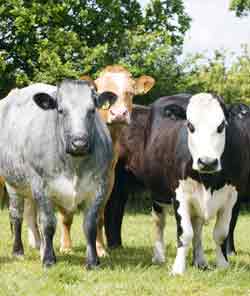High beef prices could see replacement shortages

With commercial beef prices still on the up, fears are being raised that an increase in potential breeding heifers being finished could see a shortage in replacements next year.
This is according to vet Maarten Boers, The Livestock Partnership, West Sussex, who says those cashing in now are taking a short term view, resulting in potential longer term problems on farm.
“With beef prices being so high over the past six months, many farmers have been finishing heifers and cashing in on them rather than bulling them and breeding their own suckler cow replacements.
“Because everyone is doing it, this essentially will mean a shortage of replacements next year,” says Mr Boers.
Although in the short term, selling heifers will return a quick cash fix, in the long term, a lack of replacements may cost some farmers more, as they could potentially be forced to hold on and breed next year from poorer quality stock.
“A shortage of replacements may see many farmers being pushed to bull poorer cows next year. This could include cows not getting in calf this year, those with mastitis and poor udders and also those in poor condition.”
Breeding from cows with poor udders as an example can have severe long term effects, explains Mr Boers. “Using cows with poor udders will inevitably affect calf growth rates and so more expense for bought in feeds would be needed to increase calves growth rate. Keeping poor cows will ultimately result in more labour and also further expense on vet and medicine costs.”
But, it is not too late to reverse the situation and look at the long term view, says Mr Boers. “Although it is July, it is still possible to have heifers running with the bull for the next four to six weeks, but action is needed now. The most fertile heifers will conceive within one to two cycles.”
While many agree the warning signs are there that there may be a shortage of heifers next year, because of more going forward for finishing, SAC beef specialist Gavin Hill, believes herds are actually becoming more efficient and productive.
“Because cull cows have now become a product with prices increasing, many farmers are now taking the opportunity of selling poorer unproductive stock, instead of holding them back because of a lack of money as in the past.”
This may result in cow numbers dropping significantly in some herds, as farmer’s cash in cull cows and heifers according to Mr Hill.
“In some herds cow numbers may have dropped between 20 and 30%, but farmers need to drop their fixed costs at the same rate if they wish to be efficient and profitable.
